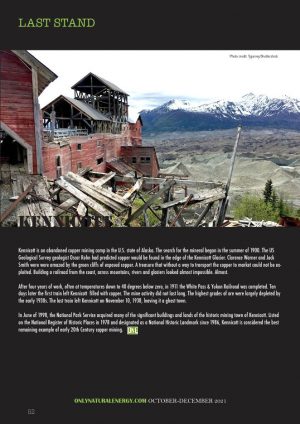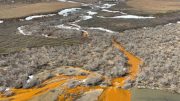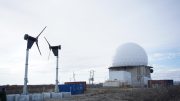 Kennicott is an abandoned copper mining camp in the U.S. state of Alaska. The search for the mineral began in the summer of 1900. The US Geological Survey geologist Oscar Rohn had predicted copper would be found in the edge of the Kennicott Glacier. Clarence Warner and Jack Smith were were amazed by the green cliffs of exposed copper. A treasure that without a way to transport the copper to market could not be exploited. Building a railroad from the coast, across mountains, rivers and glaciers looked almost impossible. Almost.
Kennicott is an abandoned copper mining camp in the U.S. state of Alaska. The search for the mineral began in the summer of 1900. The US Geological Survey geologist Oscar Rohn had predicted copper would be found in the edge of the Kennicott Glacier. Clarence Warner and Jack Smith were were amazed by the green cliffs of exposed copper. A treasure that without a way to transport the copper to market could not be exploited. Building a railroad from the coast, across mountains, rivers and glaciers looked almost impossible. Almost.
After four years of work, often at temperatures down to 40 degrees below zero, in 1911 the White Pass & Yukon Railroad was completed. Ten days later the first train left Kennicott filled with copper. The mine activity did not last long. The highest grades of ore were largely depleted by the early 1930s. The last train left Kennicott on November 10, 1938, leaving it a ghost town.
In June of 1998, the National Park Service acquired many of the significant buildings and lands of the historic mining town of Kennicott. Listed on the National Register of Historic Places in 1978 and designated as a National Historic Landmark since 1986, Kennicott is considered the best remaining example of early 20th Century copper mining. ONE




